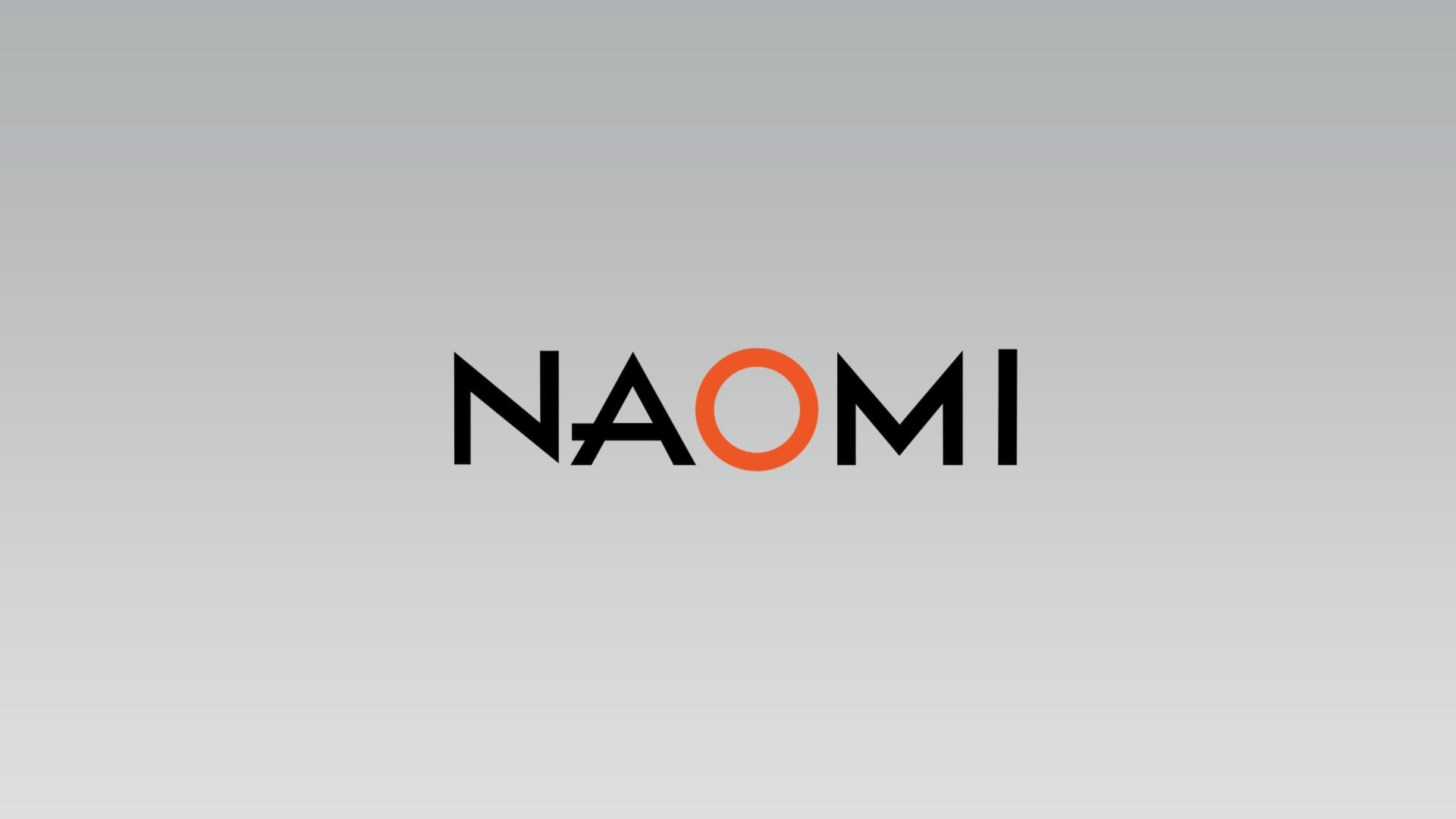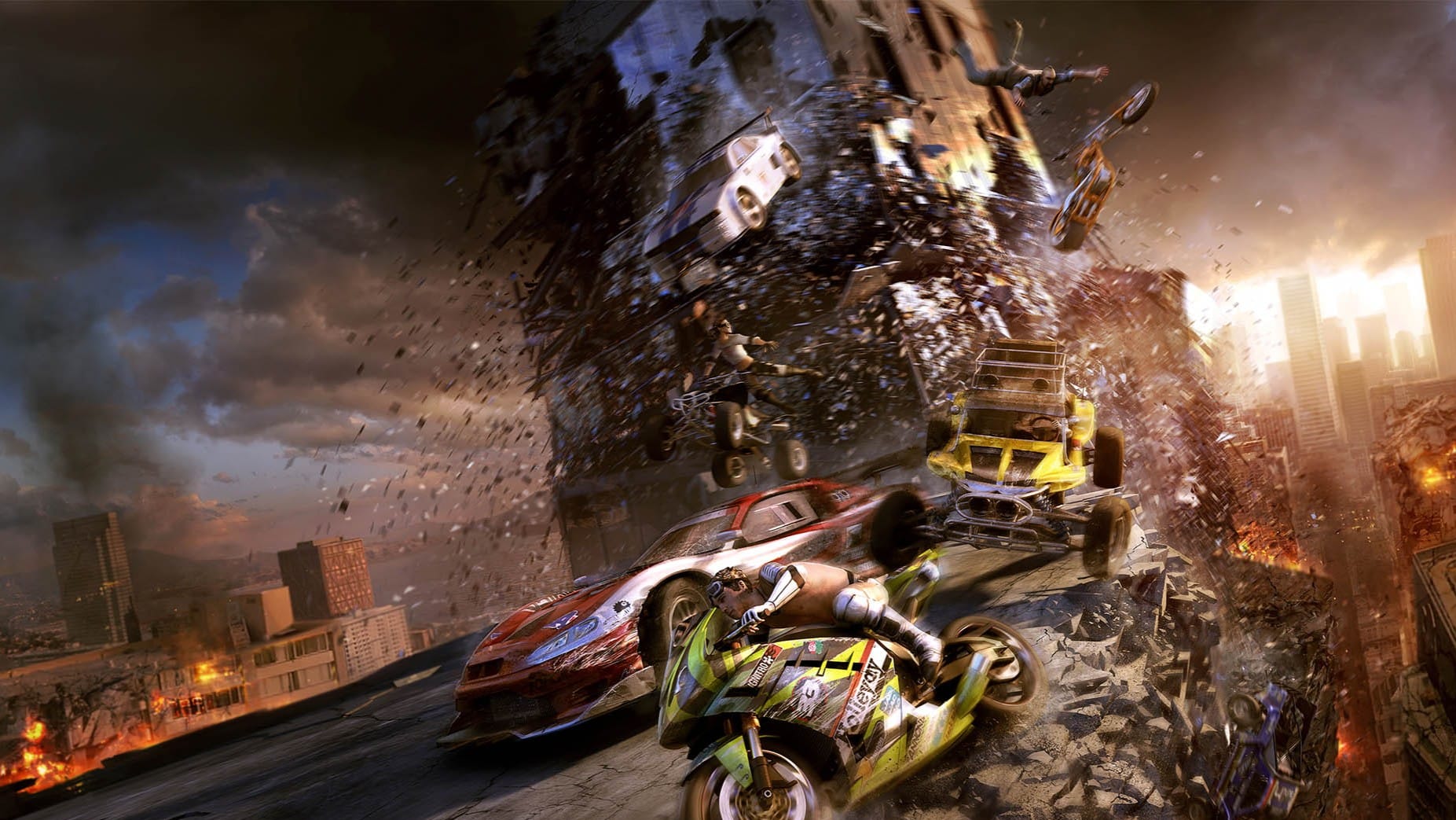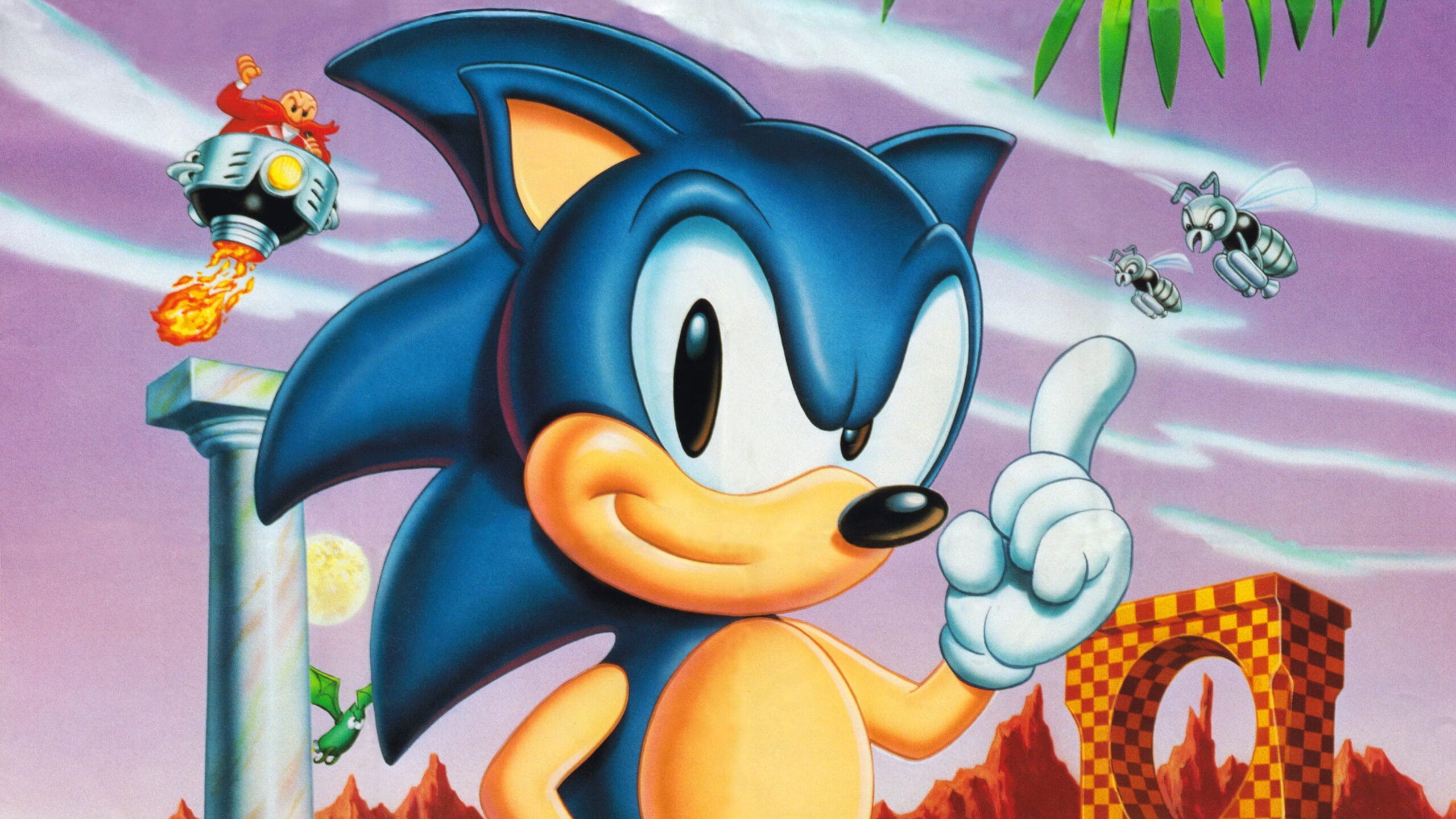When Sega’s Dreamcast roared onto the scene in 1999, it quickly became a haven for adrenaline-chasing arcade purists. No other console of its era captured the raw electricity of the shmup quite like this one. From blistering bullet-hell gauntlets to experimental hybrids that rewrote the rulebook, the Dreamcast’s library became a sanctuary for a genre often left in the shadows. These weren’t just ports tossed from arcade cabinets to living rooms—they were spectacles, loaded with razor-sharp mechanics, dazzling score systems, and enough visual spectacle to melt a CRT.
Even years after its discontinuation, the console refused to die, attracting boutique developers who kept feeding it fresh shoot-’em-up lifeblood. The result? A dazzling mix of official releases, obscure imports, and indie legends that transformed Sega’s final system into a cult shrine for shmup devotees. If you want to understand why the Dreamcast is both a collector’s dream and a player’s proving ground, look no further than the twenty essential shooters that defined—and extended—its remarkable afterlife.
Ikaruga
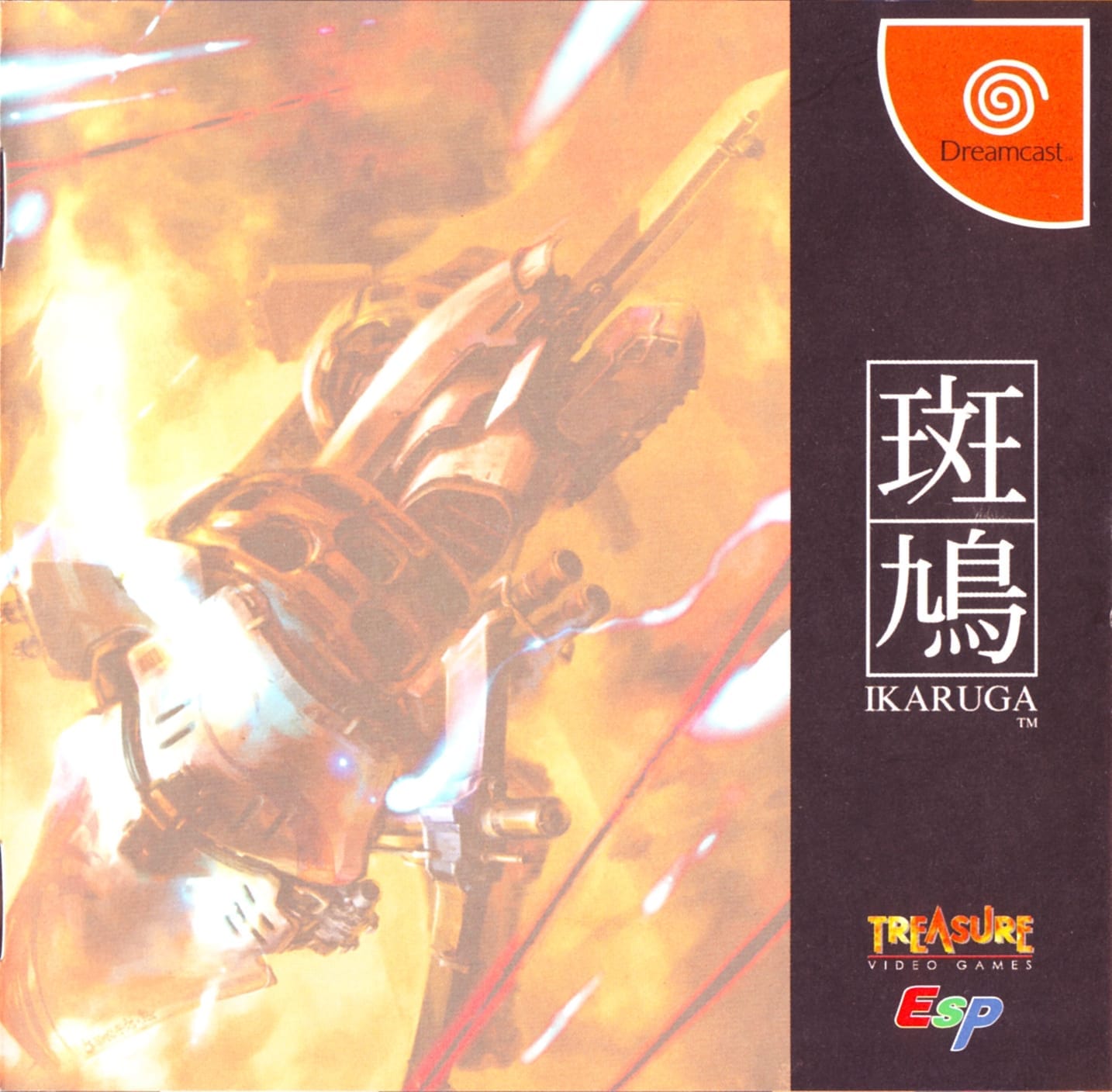
- Developer: Treasure
- Release Date: September 5, 2002
Few shooters command the same reverence as Ikaruga. Treasure’s follow-up to Radiant Silvergun wasn’t just another bullet-hell gauntlet—it was an intellectual crucible disguised as a shmup. At its heart lies the polarity-switching system: black and white energy that you must constantly toggle between, absorbing like-colored bullets while dishing out counterfire to the opposite. The rhythm becomes hypnotic. Dodge, absorb, switch, strike. Every encounter feels like solving a high-speed riddle, where survival depends on reading patterns with near-mystical precision. The visual contrast, the pounding soundtrack, and the unrelenting escalation created a masterpiece that blurred the line between art and game design.
Why It’s Worth Playing: Ikaruga is more than a test of reflexes—it’s a meditative duel against chaos itself. Its polarity mechanic set a new benchmark for creativity in the genre, influencing countless shmups that followed. On the Dreamcast, it stands as a defining statement of what the console represented: arcade perfection reimagined for the living room, demanding mastery, but rewarding it with unmatched satisfaction.
Giga Wing
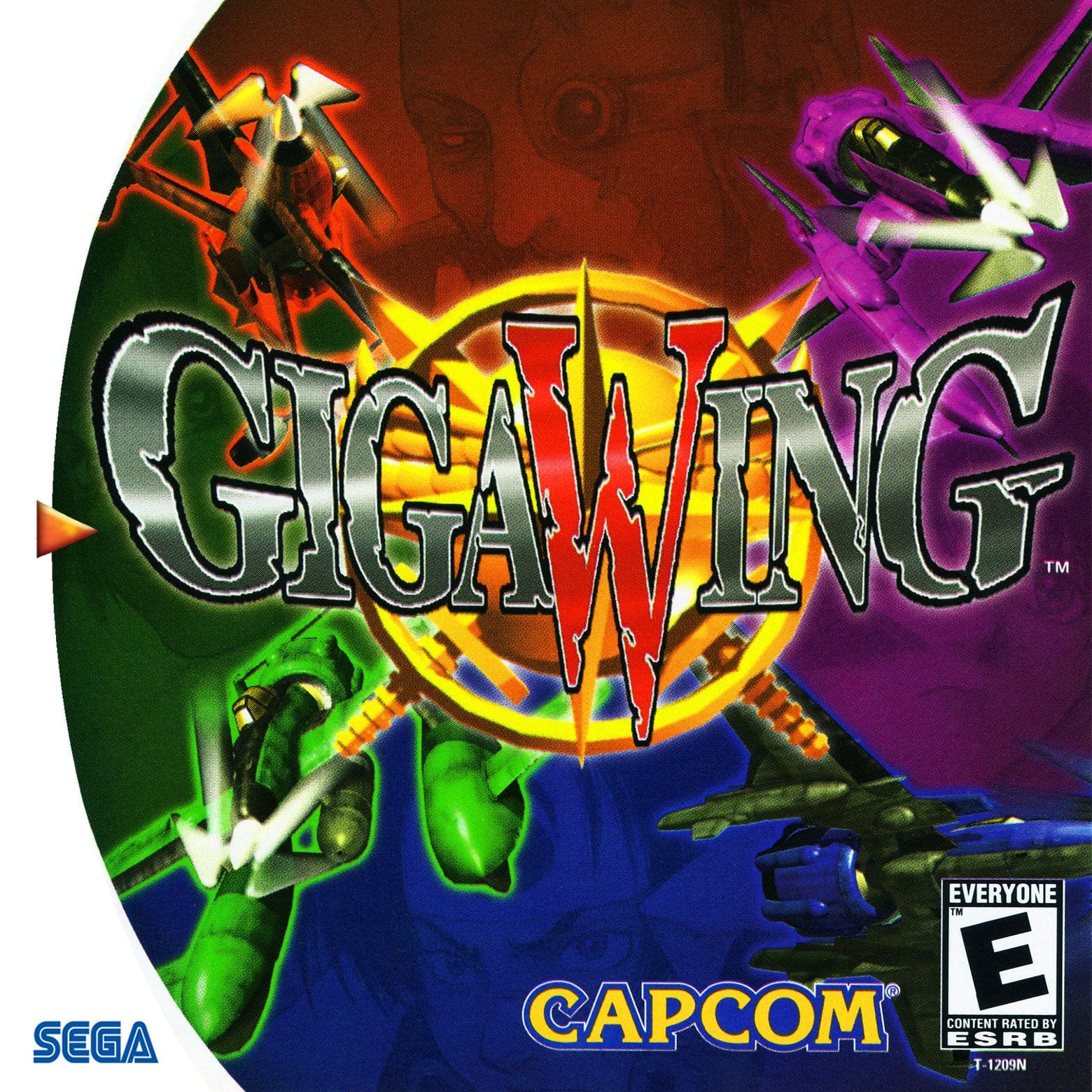
- Developer: Takumi Corporation
- Release Date: November 11, 1999
In an era where bullet-hell games often drowned players in insurmountable firepower, Giga Wing dared to hand you a weapon that flipped the script. Instead of weaving endlessly between curtains of death, Takumi introduced the Reflect Force—a mechanic that let you absorb enemy fire and hurl it back in a shimmering storm of destruction. Suddenly, the very thing designed to kill you became ammunition in your arsenal. It turned the battlefield into a dazzling spectacle, where screens filled with bullet swarms transformed into kaleidoscopic counterblasts. The Dreamcast port didn’t just capture the arcade’s energy—it doubled down, offering infinite continues and turning score-chasing into its own high-stakes obsession.
Why It’s Worth Playing: Giga Wing isn’t about endurance—it’s about dominance. The Reflect Force gives players a sense of audacity rarely seen in shmups, encouraging bold maneuvers over timid dodging. For fans of score attacks, its chaining system becomes an addictive pursuit, pushing you to squeeze out every last point. It’s chaotic, stylish, and quintessential Dreamcast: an arcade-born experience fine-tuned for home play.
Giga Wing 2

- Developer: Takumi Corporation
- Release Date: January 18, 2001
If Giga Wing felt like a storm, its sequel was a full-blown supernova. Giga Wing 2 took the Reflect Force concept and expanded it into something even more outrageous, with bigger explosions, sharper visuals, and a multiplayer focus that transformed the chaos into a shared spectacle. For the first time, up to four players could dive into the bullet-drenched madness simultaneously, their screens erupting into technicolor firestorms as wave after wave of enemy fire was absorbed and unleashed in retaliatory blasts. The Dreamcast’s hardware made it possible to render these scenes with startling clarity, delivering some of the most visually extravagant bullet curtains of its generation.
Why It’s Worth Playing: Where the original felt like a daring experiment, Giga Wing 2 perfected the formula. The addition of new ships, characters, and cooperative mayhem gave the game a sense of scale and personality that few shmups could match. It’s not just about survival—it’s about reveling in the artistry of excess, where every stage crescendos into a bombastic fireworks display. For fans of shmups and party play alike, it remains one of the Dreamcast’s most spectacular showcases.
Bangai-O
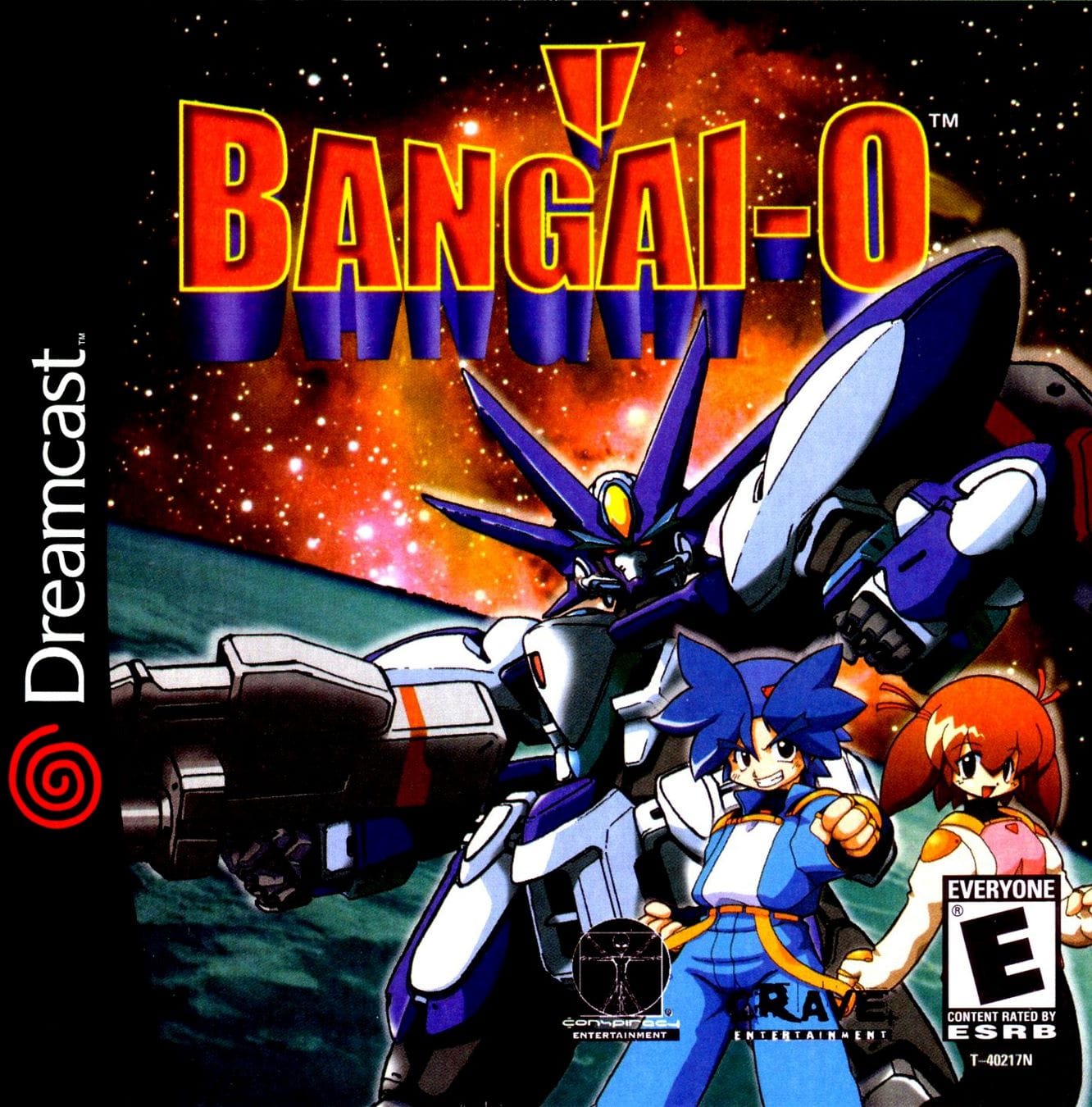
- Developer: Treasure
- Release Date: December 9, 1999
Only Treasure could dream up a shmup where restraint feels like a foreign concept. Bangai-O is a delirious fusion of shooter and action puzzler, arming you with a mech capable of unleashing screen-filling counterblasts against swarms of enemies. At any given moment, hundreds of missiles, lasers, and explosions overlap in a symphony of chaos that looks less like structured combat and more like controlled bedlam. Yet beneath the madness lies precision: timing your “counterattack” when the screen is most congested transforms danger into dazzling offense. It’s a sandbox of destruction, where experimentation is as rewarding as survival.
Why It’s Worth Playing: Bangai-O is as much about creativity as it is about twitch reflexes. Its levels encourage playful problem-solving, inviting you to manipulate enemy fire into glorious chain reactions. Unlike traditional shmups, it thrives on excess, turning chaos into strategy. For players craving something wildly inventive, it remains one of the Dreamcast’s most eccentric—and unforgettable—experiences.
Psyvariar 2: The Will To Fabricate

- Developer: Success
- Release Date: February 26, 2004
Psyvariar 2 isn’t content with simple dodging—it demands intimacy with danger. At its core lies the “buzz” mechanic: by grazing enemy bullets, your ship powers up, extending combos and amplifying firepower. What sounds suicidal becomes the path to mastery, pushing you to flirt with annihilation in pursuit of higher scores. Every near-miss sends a jolt of adrenaline, transforming bullet curtains into opportunities for growth. With its sleek visuals, hypnotic soundtrack, and fluid movement system, the game feels more like a dance than a firefight—every encounter a choreographed duel between survival instincts and calculated risk-taking.
Why It’s Worth Playing: Psyvariar 2 rewards fearlessness. Its buzz mechanic flipped genre conventions on their head, making risk not just thrilling but essential. The Dreamcast version captures the arcade’s intensity flawlessly, cementing it as a cult favorite for players who crave innovation over tradition. For those willing to lean into the storm rather than away from it, few shmups offer a rush this pure.
Border Down

- Developer: G.rev
- Release Date: September 25, 2003
Border Down is the kind of shmup that lingers in memory long after the controller is set down. Built around its ingenious “border system,” the game ties your lives directly to shifting difficulty levels. Fail, and you slide down a border—dropping into a lower route that offers new enemy patterns, stage layouts, and scoring opportunities. Each attempt becomes a multidimensional journey, where success and failure are equally revealing. Visually, it’s a spectacle of sleek ships and moody backdrops, drenched in a futuristic atmosphere that feels as heavy as its bullet patterns. It’s the rare shooter that punishes and rewards in the same breath, creating a loop that begs for endless replays.
Why It’s Worth Playing: Border Down delivers a unique blend of narrative and mechanics, where your performance literally alters the course of the game. It’s not just about reaching the end—it’s about exploring the full spectrum of its shifting realities. For Dreamcast owners, it remains one of the most inventive, cerebral shooters ever crafted, and a shining testament to the console’s reputation for daring design.
Under Defeat
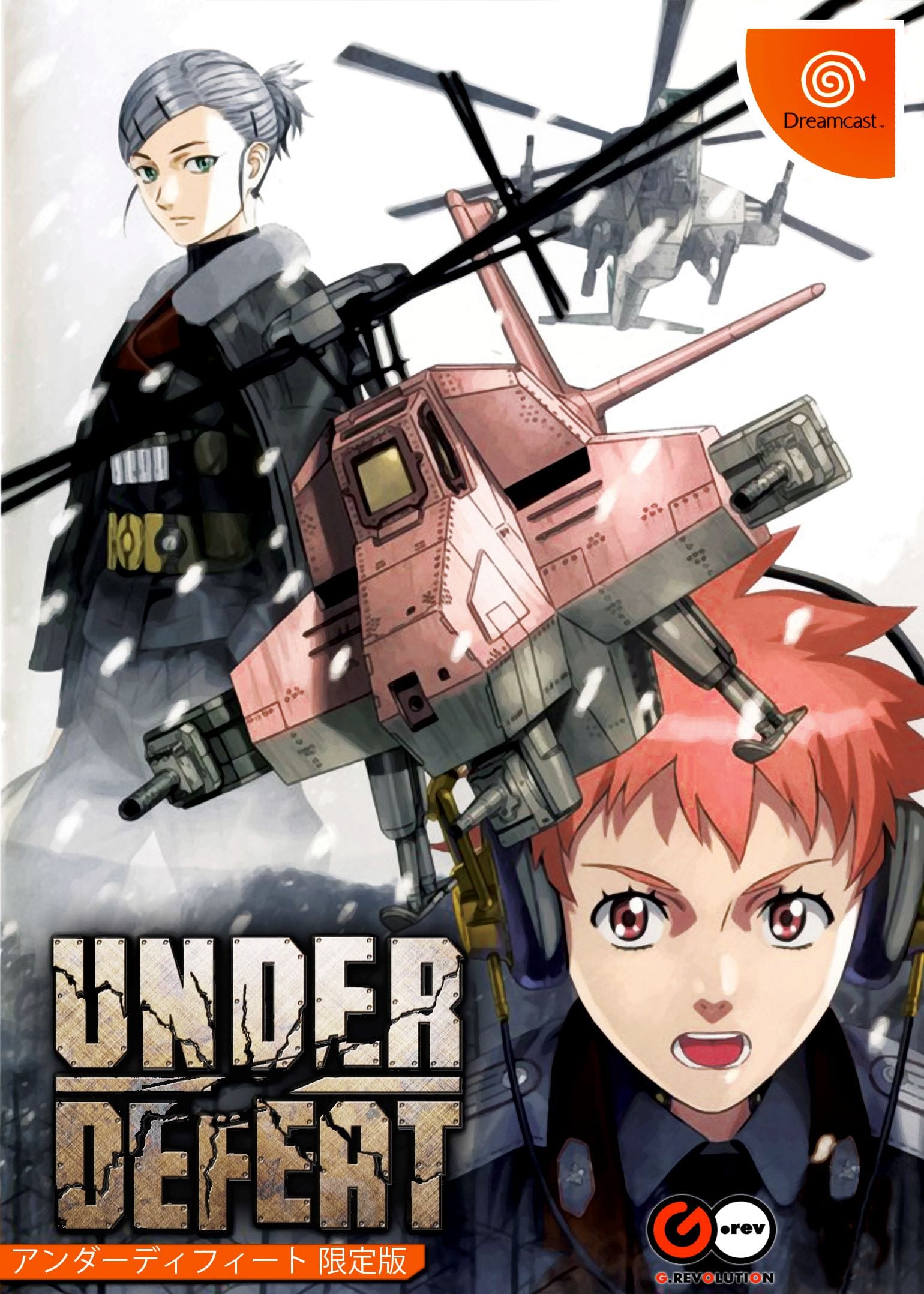
- Developer: G.rev
- Release Date: March 23, 2006
Arriving years after Sega had officially retired the Dreamcast, Under Defeat stood as a defiant swan song—a shmup that proved the console still had fire in its belly. Trading sleek starships for hulking attack helicopters, it delivered a grittier take on the genre, with rotors whirring through dense smoke and battle-scorched landscapes. Its clever tilt-shooting mechanic allowed for angled attacks, giving players tactical flexibility and a sense of weight rarely felt in vertical shooters. Combined with its moody visuals and atmospheric sound design, the game exudes a grounded intensity, as if you’re piloting through the embers of a war-torn world rather than an abstract arcade fantasy.
Why It’s Worth Playing: Under Defeat is a landmark release not only because of its impeccable gameplay, but because of what it represented—the Dreamcast’s refusal to fade quietly into history. With its heavy, almost cinematic presentation and deep tactical play, it’s one of the most compelling reasons to keep Sega’s final console powered on. For shmup devotees, it’s both a challenge and a statement piece.
Zero Gunner 2

- Developer: Psikyo
- Release Date: September 6, 2001
Zero Gunner 2 took the familiar Psikyo formula and spun it—literally. Ditching fixed firing lines, this helicopter-based shmup gave players full 360-degree freedom to rotate and fire in any direction. The result was a fresh, dynamic experience where threats didn’t just come from above or ahead—they came from everywhere. Enemies swooped in from unexpected angles, boss fights shifted perspectives mid-battle, and the screen became a living arena rather than a static gauntlet. Its use of 3D visuals gave it a sleek, futuristic sheen, while still retaining the immediacy and punch of Psikyo’s 2D design philosophy.
Why It’s Worth Playing: Zero Gunner 2 remains one of the most inventive shooters on the Dreamcast, thanks to its free-rotation mechanic that forced players to rethink traditional shmup strategies. It’s approachable, but brimming with depth once you adapt to its unique control scheme. For those looking for a break from straight-laced vertical and horizontal shooters, this is a thrilling detour into innovation done right.
Chaos Field
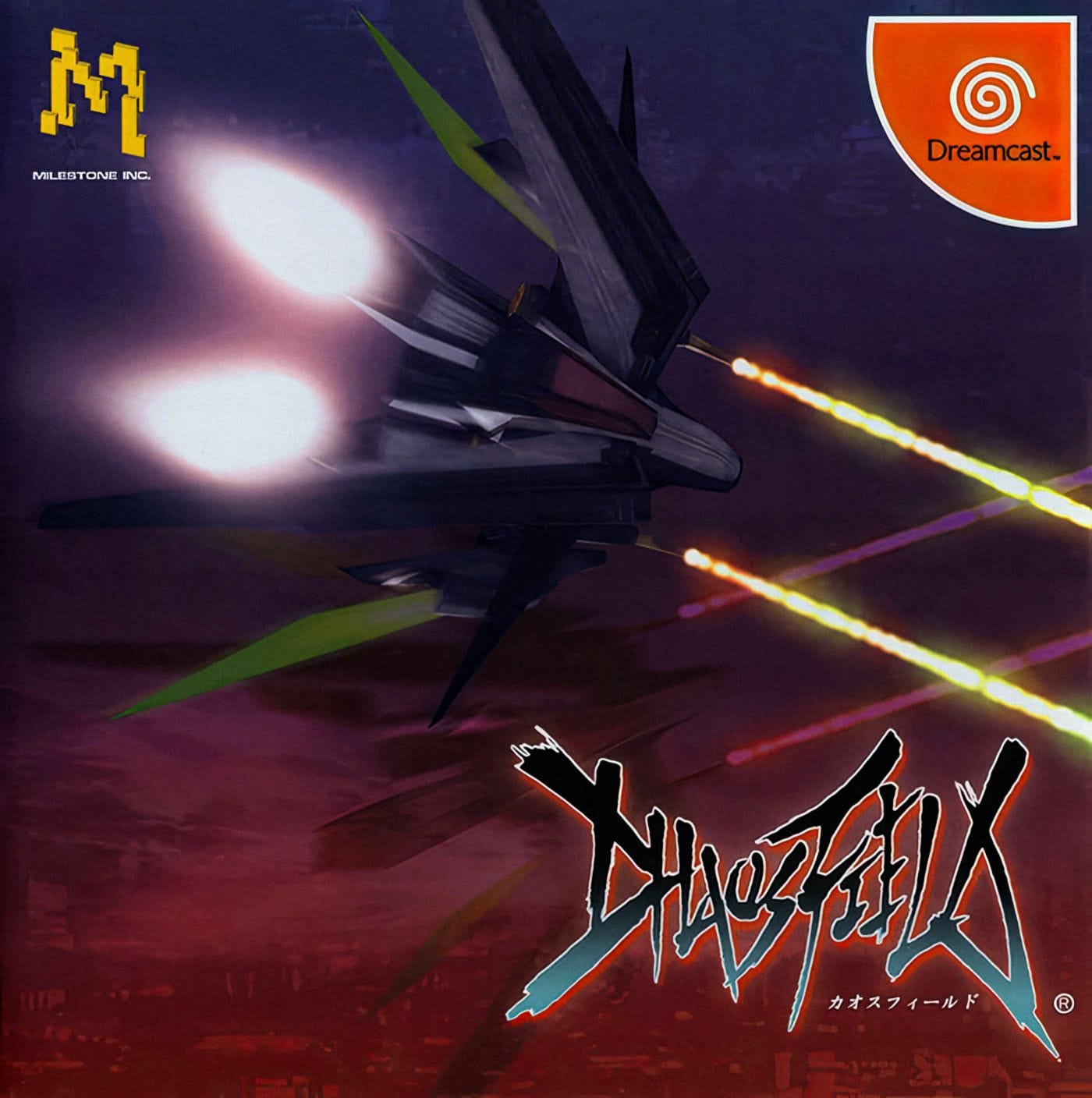
- Developer: MileStone Inc.
- Release Date: December 16, 2004
Where most shmups build toward boss encounters, Chaos Field throws you straight into the fire. Every stage is essentially a succession of towering bosses, each one demanding mastery of its layered mechanics. At the heart of the game lies its dual-realm system: the “Chaos Field” and the “Order Field.” Switching between them changes how you interact with enemies—one favoring raw offense, the other opening paths for careful survival. Add in a trio of selectable ships, each with distinct abilities, and the result is a shmup that feels like a constant duel rather than a sprint. The soundtrack pulses with urgency, amplifying the tension as bullet curtains thicken and screen-filling explosions become routine.
Why It’s Worth Playing: Chaos Field is a love letter to boss battles, stripping away filler and focusing entirely on climactic encounters. Its field-shifting mechanic adds tactical nuance, making every fight a balance between aggression and defense. For players who crave relentless, high-stakes combat without pause, it delivers one of the Dreamcast’s most intense—and underrated—shooting experiences.
Mars Matrix
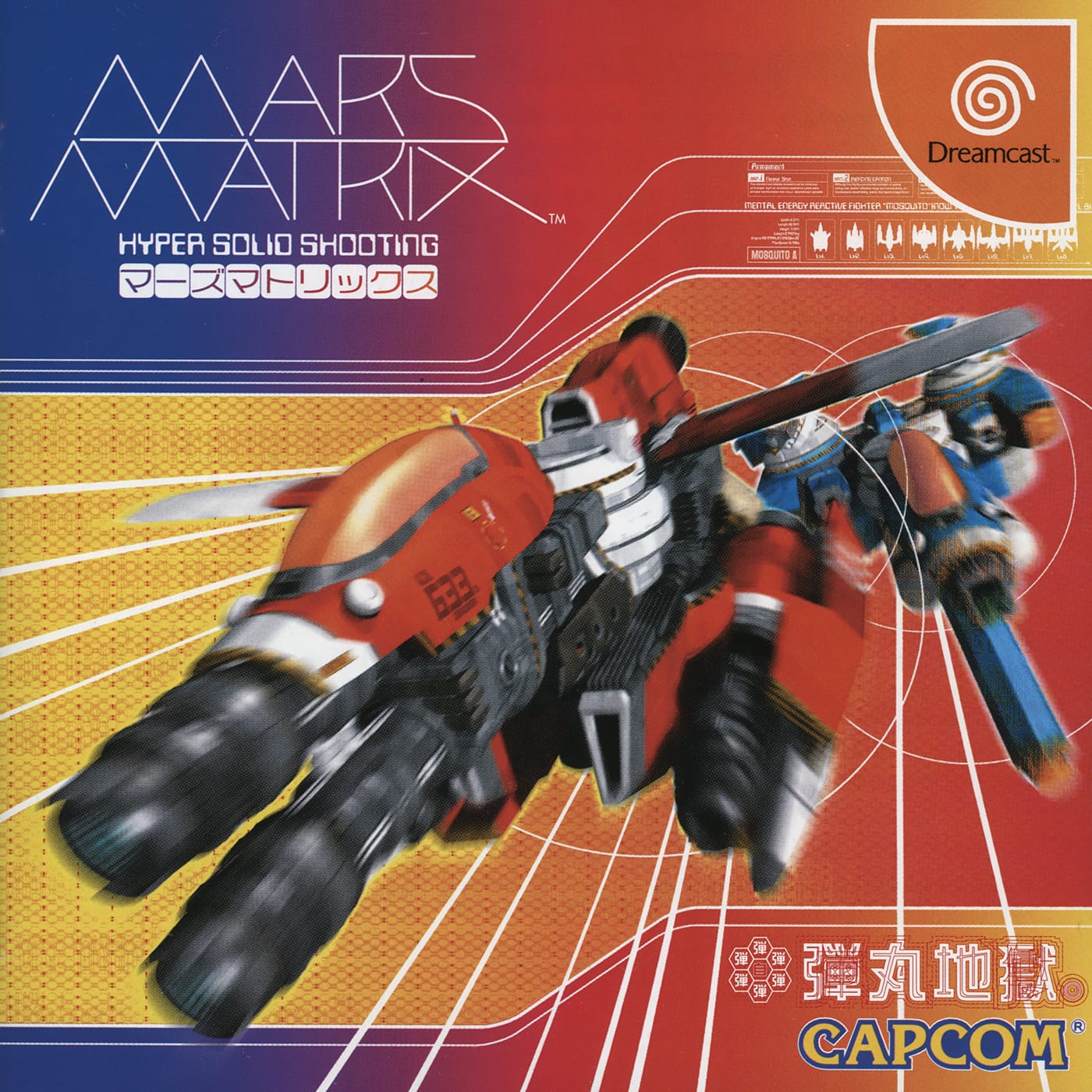
- Developer: Takumi Corporation
- Release Date: November 9, 2000
Mars Matrix doesn’t simply overwhelm you with bullets—it dares you to weaponize them. Takumi’s masterstroke is the “Mosquito” system, which lets you absorb enemy fire, convert it into a counterattack, and unleash it back in dazzling cascades. The screen quickly becomes a kaleidoscope of danger and opportunity, where every bullet is both a threat and a resource. Its pacing is relentless: lightning-fast enemies, dense projectile swarms, and level designs that punish hesitation. Yet beneath the chaos lies a razor-sharp score system, inviting players to chase ever-higher multipliers through risky, high-reward maneuvers. The Dreamcast port was a revelation, adding a robust training mode and near-perfect fidelity to the arcade original.
Why It’s Worth Playing: Mars Matrix is shmup design at its most exhilarating—an endless tug-of-war between survival and greed. Its scoring mechanics make every run feel fresh, while its sheer intensity ensures no two battles unfold the same way. For Dreamcast fans, it’s the ultimate high-score obsession, a game that rewards daring players with some of the most spectacular payoffs in the genre.
Cannon Spike

- Developer: Psikyo
- Release Date: November 15, 2000
Part shmup, part run-and-gun, and part all-star crossover, Cannon Spike is one of the Dreamcast’s most eclectic thrill rides. Instead of piloting sleek starships, you take direct control of iconic characters like Cammy from Street Fighter or Arthur from Ghosts ’n Goblins, blasting through arenas packed with enemies and oversized bosses. The gameplay blends twin-stick shooting with arcade brawler sensibilities, creating a fast-paced hybrid that feels closer to an action-packed stage show than a traditional shooter. Every encounter is short, sharp, and explosive—designed to be devoured in quick bursts but endlessly replayed for mastery. Its exaggerated visuals and over-the-top style make it stand out as a true arcade oddity.
Why It’s Worth Playing: Cannon Spike is a rare specimen: a shmup that refuses to be boxed in. Its fusion of Capcom’s beloved characters with Psikyo’s kinetic design results in a game that’s chaotic, charismatic, and uniquely Dreamcast. For anyone who loves genre mashups or arcade excess, it remains a must-play curiosity and one of the system’s most memorable hidden gems.
Armada

- Developer: Metro3D
- Release Date: November 26, 1999
While most shmups on the Dreamcast channeled arcade intensity, Armada charted its own course through the stars. Blending twin-stick shooting with light RPG mechanics, it dropped players into a sprawling galaxy teeming with hostile alien forces and endless opportunities for exploration. Missions weren’t strictly linear—you could roam, trade, and take on objectives at your own pace, either solo or in cooperative play. The result was a shmup that felt strangely vast, almost like a proto–space MMO distilled into couch co-op form. Its distinctive blend of arcade action and open-ended freedom gave it a personality that few shooters of its time could match.
Why It’s Worth Playing: Armada stands out because it dared to stretch the shmup formula into something more expansive and adventurous. Its emphasis on exploration and teamwork turned it into one of the Dreamcast’s most unconventional experiments. For players seeking more than just high-score chases, it offered a universe worth getting lost in—making it a true oddity, and a fascinating piece of the console’s legacy.
Radirgy
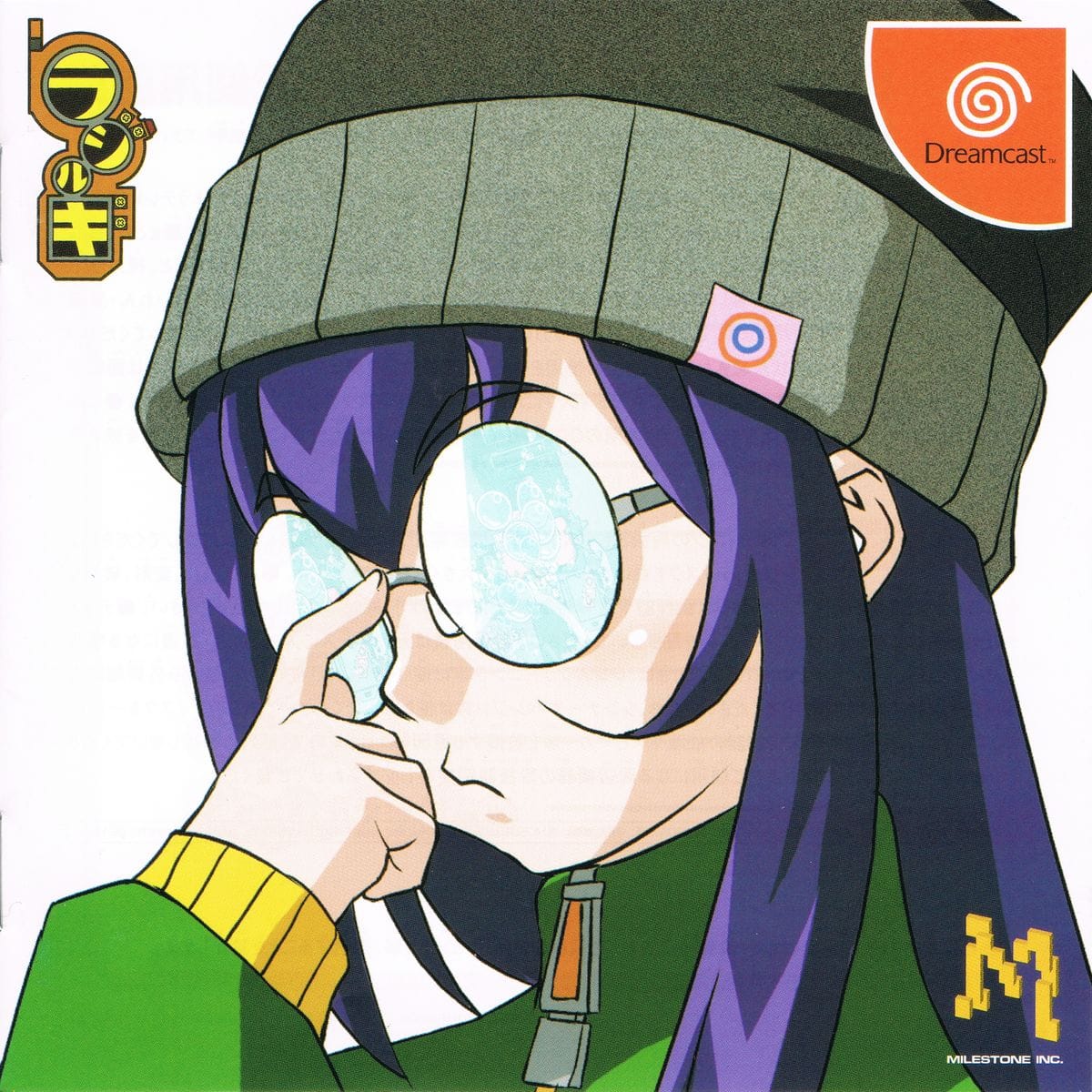
- Developer: MileStone Inc.
- Release Date: February 16, 2006
Radirgy broke away from the dark, metallic aesthetic that defined so many shmups and instead embraced bold, cel-shaded visuals that looked more like an anime in motion. Underneath that playful art style, though, lies a demanding bullet-hell experience. Piloting a hovering mech, you’re armed with a mix of close-range sword slashes, homing missiles, and a shield system that encourages aggressive, up-close play. The contrast between its bright, cartoonish presentation and the sheer density of its bullet patterns creates a surreal tension—like a candy-coated nightmare unfolding at high speed. It’s colorful, stylish, and deceptively brutal.
Why It’s Worth Playing: Radirgy is a reminder that shmups don’t all have to look the same. Its cel-shaded art direction gives it an identity instantly recognizable among the Dreamcast’s library, while its shield-and-slash mechanics add tactical depth to the chaos. For players drawn to something both eccentric and challenging, it’s one of the most distinctive shooters ever released on Sega’s final console.
Redux: Dark Matters
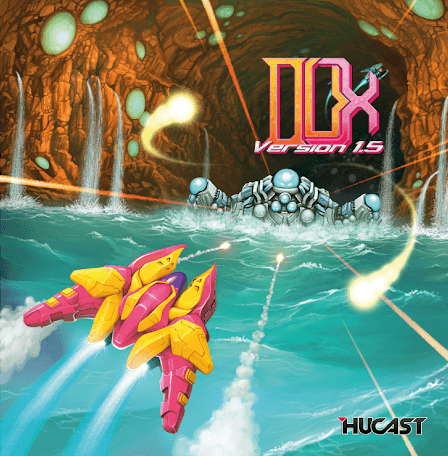
- Developer: Hucast Games
- Release Date: December 12, 2014
Funded through Kickstarter, Redux: Dark Matters was both a love letter to and an evolution of the classic horizontal shmup formula. With slick HD-inspired visuals, pulsing electronic music, and polished mechanics, it delivered a modernized arcade experience on aging hardware. Its gameplay blended familiar shooting with homing lasers and a charge beam system that encouraged precise timing and calculated aggression. Every stage oozes atmosphere, from neon-lit voids to mechanical strongholds, showing just how much passion the homebrew community poured into keeping the Dreamcast alive.
Why It’s Worth Playing: Redux: Dark Matters isn’t just a shmup—it’s a testament to the Dreamcast’s undying legacy. It demonstrates how a dedicated fan base and indie developers kept pushing the console long after its official demise. For collectors, it’s a standout modern release that bridges past and present, offering proof that the Dreamcast never truly stopped soaring.
Karous
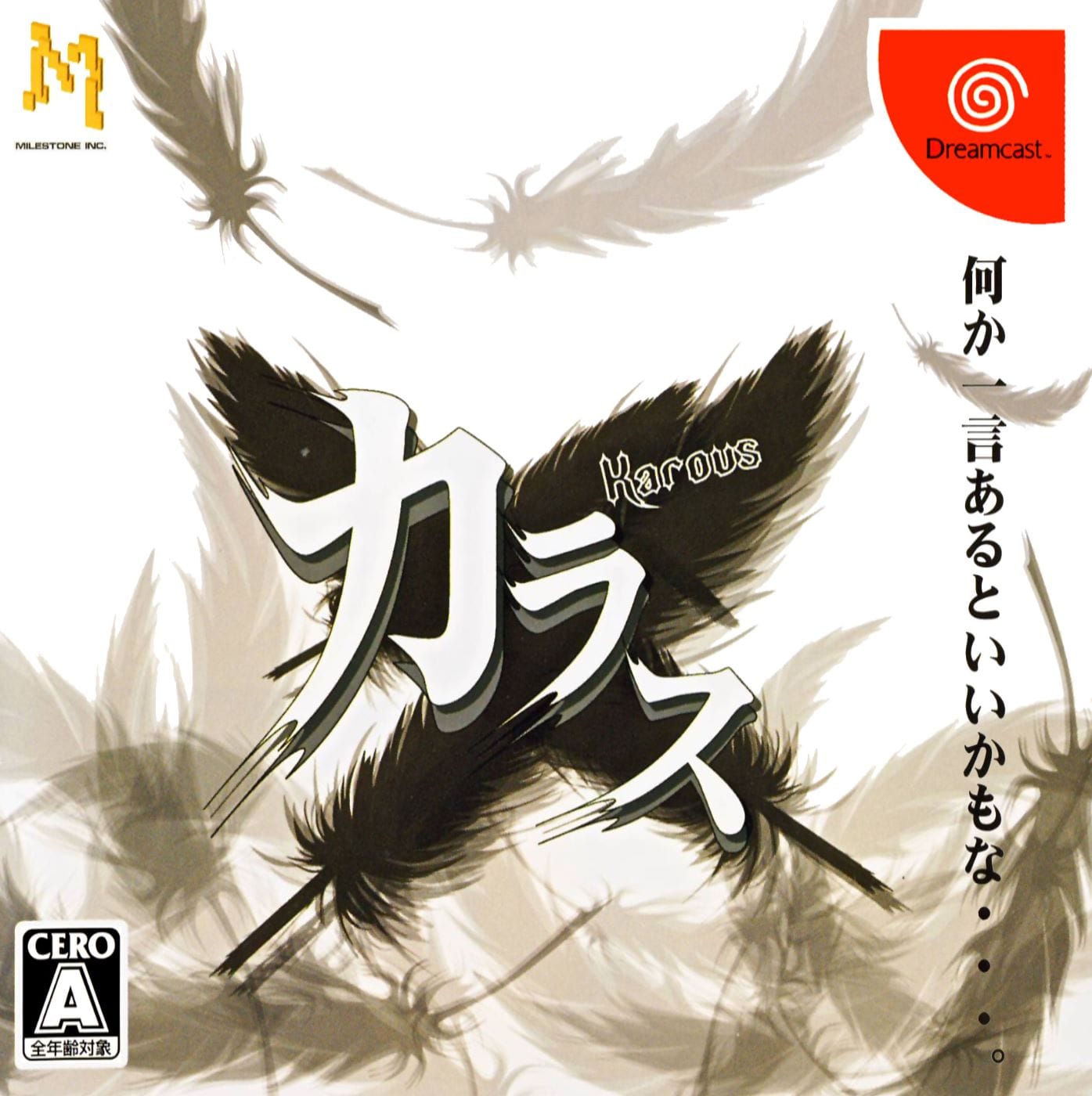
- Developer: MileStone Inc.
- Release Date: March 08, 2007
Karous stripped the shmup down to stark essentials, embracing a black-and-white visual style that felt almost abstract compared to the genre’s usual pyrotechnics. Behind that minimalist aesthetic lies a demanding vertical shooter with a deep experience system. Every action—whether slashing with your sword, firing your gun, or deploying shields—feeds into leveling up your weapons mid-battle, creating a constant sense of progression even as the screen fills with relentless enemy fire. Its atmosphere is somber, almost meditative, underscored by a haunting electronic soundtrack that sets it apart from its louder, flashier peers.
Why It’s Worth Playing: Karous is one of the most inventive late-era Dreamcast shmups. Its leveling system rewards aggressive play and experimentation, while its stripped-down visuals give it a unique identity in a crowded field. For players seeking something unconventional and cerebral, it’s a reminder of how the Dreamcast continued to push boundaries long after its “official” end.
Neo XYX
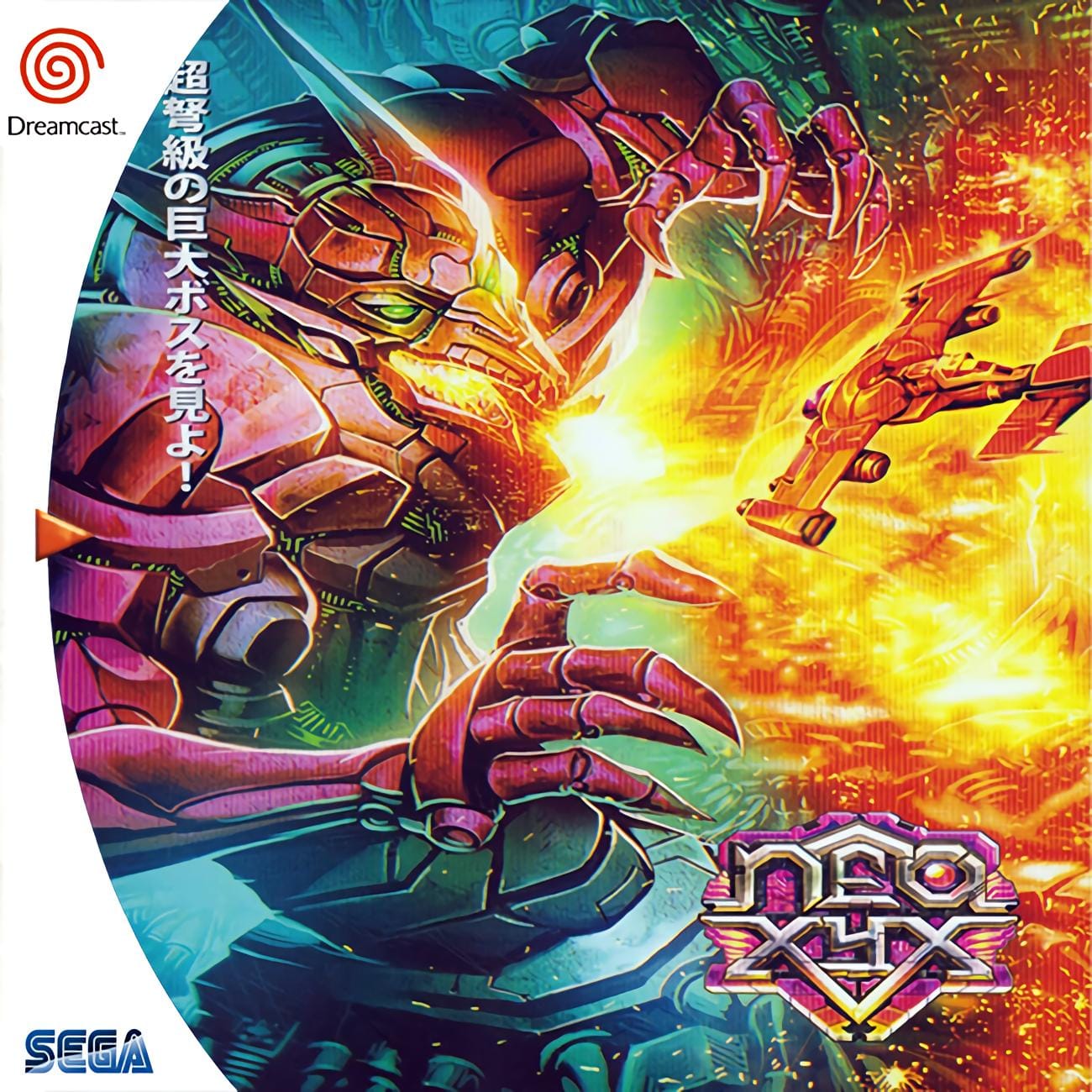
- Developer: NG:DEV.TEAM
- Release Date: February 17, 2014
When most modern shmups chased complexity and experimental gimmicks, Neo XYX chose a different flight path. This vertical blaster from NG:DEV.TEAM is a throwback to the golden age of arcade shooters, echoing Toaplan’s relentless pace and straightforward scoring systems. Tight hitboxes, crisp pixel art, and pounding music evoke an earlier era, yet it never feels like simple imitation. Instead, Neo XYX brings refinement—a razor-sharp focus on bullet patterns that are punishing but fair, rewarding the player’s persistence and precision.
Why It’s Worth Playing: For purists, Neo XYX is a Dreamcast essential. It strips the genre down to its roots while dressing it in modern indie polish, proving that the spirit of the arcade still had new heights to climb—even on a console long past its “official” lifespan.
Triggerheart Exelica

- Developer: Warashi
- Release Date: February 22, 2007
Few shmups dare to be as audacious as Triggerheart Exelica. Rather than relying solely on raw firepower, this vertical shooter hands you an ingenious tool: anchor units that let you grapple enemy ships, swing them around, and launch them back into the fray as living weapons. It’s a mechanic that transforms every encounter into a chaotic playground, blending precision dodging with moments of pure, destructive creativity. Wrapped in vibrant anime aesthetics and starring armored heroines locked in a cosmic struggle, it delivers both spectacle and style without losing sight of razor-sharp gameplay. The result is a shmup that feels every bit as quirky as it is thrilling.
Why It’s Worth Playing: Triggerheart Exelica stands out because it reimagines how players interact with enemies, turning them from threats into tools of survival. Its grappling mechanic rewards experimentation, making it endlessly replayable and unpredictable. For those seeking something unconventional yet deeply satisfying, it’s one of the Dreamcast’s most inventive and unforgettable shooters.
Fast Striker

- Developer: NG:DEV.TEAM
- Release Date: December 28, 2010
At a time when the Dreamcast was little more than a memory in the mainstream, Fast Striker arrived as proof that passion projects could keep the console alive. This indie vertical shmup wears its influences proudly, channeling the spirit of classic arcade bullet-hell games while layering in modern polish. With six difficulty modes, a wealth of scoring systems, and a fluid barrage of neon-lit projectiles, it delivers both accessibility for newcomers and depth for veterans. Its crisp visuals and pounding techno soundtrack elevate the spectacle, making every stage feel like an unapologetic celebration of shmup excess.
Why It’s Worth Playing: Fast Striker is more than just another indie experiment—it’s a love letter to the Dreamcast community. Its wealth of modes, addictive score mechanics, and finely tuned difficulty make it one of the most fully realized posthumous releases on the console. For longtime fans, it represents not only a great shmup, but also a symbol of the Dreamcast’s undying spirit.
Trizeal

- Developer: Triangle Service
- Release Date: April 7, 2005
When shmups were getting increasingly complex, Trizeal arrived as a gentle reminder of why people fell in love with the genre in the first place. It doesn’t dazzle with over-the-top visuals or experimental mechanics. Instead, it leans into simple joys: blasting waves of enemies, upgrading weapons, and weaving through familiar bullet spreads. The game’s ship can morph between three distinct weapon types—spread, homing, and laser—giving players tactical flexibility while keeping the action accessible. It’s as if Triangle Service wanted to bottle up the essence of ’90s arcade shooting and pour it into one disc.
Why It’s Worth Playing: Trizeal may not be the flashiest Dreamcast shmup, but it’s one of the most earnest. It plays like a heartfelt mixtape of genre traditions, reminding you why the fundamentals of shooting, dodging, and scoring still endure. For purists and newcomers alike, it’s comfort food with just enough spice to keep you hooked.
Sturmwind
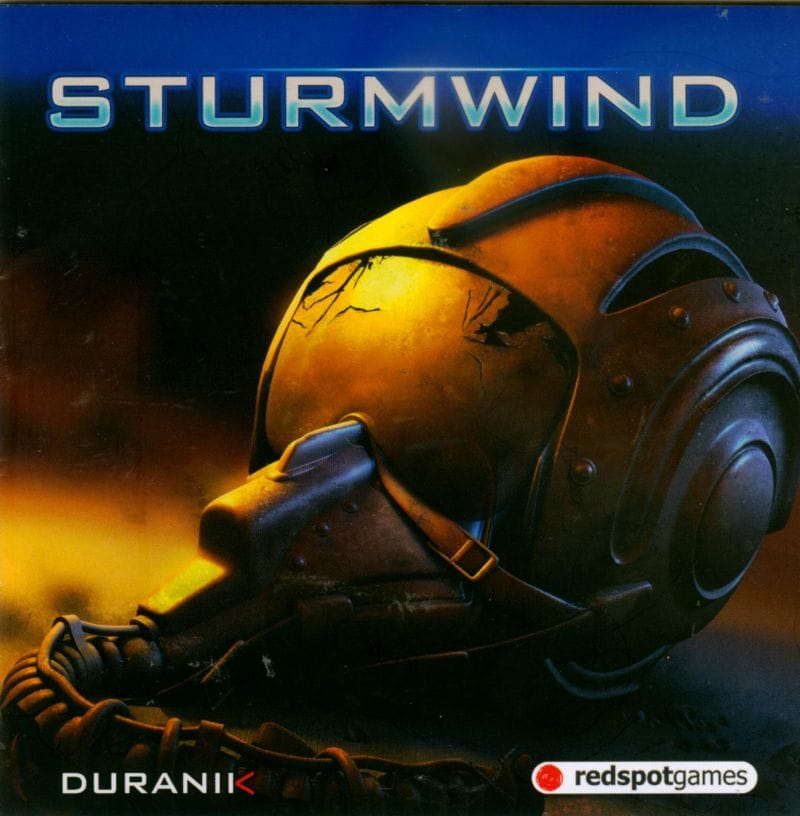
- Developer: Duranik
- Release Date: April 24, 2013
If the Dreamcast’s legacy is about persistence beyond its official lifespan, Sturmwind is the perfect symbol. Crafted with obsessive care by Duranik, this indie marvel looks and feels like it could have headlined the console’s original lineup. Its visuals are jaw-dropping—massive biomechanical bosses, surreal landscapes, and screen-filling particle effects that rival anything Sega’s own studios ever produced. Yet it’s not just eye candy. Sturmwind layers smart mechanics, like a flexible weapon system that doubles as your shield, encouraging experimentation and rewarding mastery. Every level feels like a set piece, designed to impress as much as it challenges.
Why It’s Worth Playing: More than just a shmup, Sturmwind proves that passion and artistry can outshine budgets and big publishers, cementing its status as one of the greatest indie shooters ever pressed to disc. For many fans, this is the crown jewel of the posthumous Dreamcast library.
Conclusion
The Dreamcast may have bowed out of the mainstream spotlight far too early, but in the world of shmups, its flame still burns bright. Few consoles boast such a heady cocktail of arcade-perfect ports, daring imports, and posthumous indie triumphs. Whether it was Treasure rewriting the rulebook with Ikaruga, Psikyo delivering accessible chaos with Gunbird 2, or passionate developers like Duranik breathing new life into the console years after its “end,” the Dreamcast became a sanctuary for the genre when other platforms had moved on.
For collectors, it remains a treasure chest—where official discs sit comfortably alongside rare imports and handcrafted indie pressings. And for players, it’s a reminder of Sega’s audacious spirit: a machine that welcomed the niche, the experimental, and the sublime.
Two decades on, the Dreamcast’s shmup legacy is proof that consoles don’t die when production stops. They endure through the communities that champion them, the developers who refuse to let them fade, and the timeless thrill of dodging a storm of bullets with nothing but nerve and reflex.



